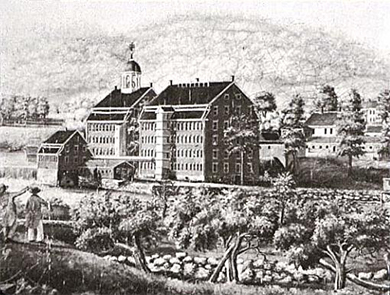| << Chapter < Page | Chapter >> Page > |
The Embargo of 1807 and the War of 1812 played a pivotal role in spurring industrial development in the United States. Jefferson’s embargo prevented American merchants from engaging in the Atlantic trade, severely cutting into their profits. The War of 1812 further compounded the financial woes of American merchants. The acute economic problems led some New England merchants, including Francis Cabot Lowell, to cast their gaze on manufacturing. Lowell had toured English mills during a stay in Great Britain. He returned to Massachusetts having memorized the designs for the advanced textile machines he had seen in his travels, especially the power loom, which replaced individual hand weavers. Lowell convinced other wealthy merchant families to invest in the creation of new mill towns. In 1813, Lowell and these wealthy investors, known as the Boston Associates, created the Boston Manufacturing Company. Together they raised $400,000 and, in 1814, established a textile mill in Waltham and a second one in the same town shortly thereafter ( [link] ).

At Waltham, cotton was carded and drawn into coarse strands of cotton fibers called rovings. The rovings were then spun into yarn, and the yarn woven into cotton cloth. Yarn no longer had to be put out to farm families for further processing. All the work was now performed at a central location—the factory.
The work in Lowell’s mills was both mechanized and specialized. Specialization meant the work was broken down into specific tasks, and workers repeatedly did the one task assigned to them in the course of a day. As machines took over labor from humans and people increasingly found themselves confined to the same repetitive step, the process of deskilling began.
The Boston Associates’ mills, which each employed hundreds of workers, were located in company towns, where the factories and worker housing were owned by a single company. This gave the owners and their agents control over their workers. The most famous of these company towns was Lowell, Massachusetts. The new town was built on land the Boston Associates purchased in 1821 from the village of East Chelmsford at the falls of the Merrimack River, north of Boston. The mill buildings themselves were constructed of red brick with large windows to let in light. Company-owned boarding houses to shelter employees were constructed near the mills. The mill owners planted flowers and trees to maintain the appearance of a rural New England town and to forestall arguments, made by many, that factory work was unnatural and unwholesome.
In contrast to many smaller mills, the Boston Associates’ enterprises avoided the Rhode Island system, preferring individual workers to families. These employees were not difficult to find. The competition New England farmers faced from farmers now settling in the West, and the growing scarcity of land in population-dense New England, had important implications for farmers’ children. Realizing their chances of inheriting a large farm or receiving a substantial dowry were remote, these teenagers sought other employment opportunities, often at the urging of their parents. While young men could work at a variety of occupations, young women had more limited options. The textile mills provided suitable employment for the daughters of Yankee farm families.

Notification Switch
Would you like to follow the 'U.s. history' conversation and receive update notifications?